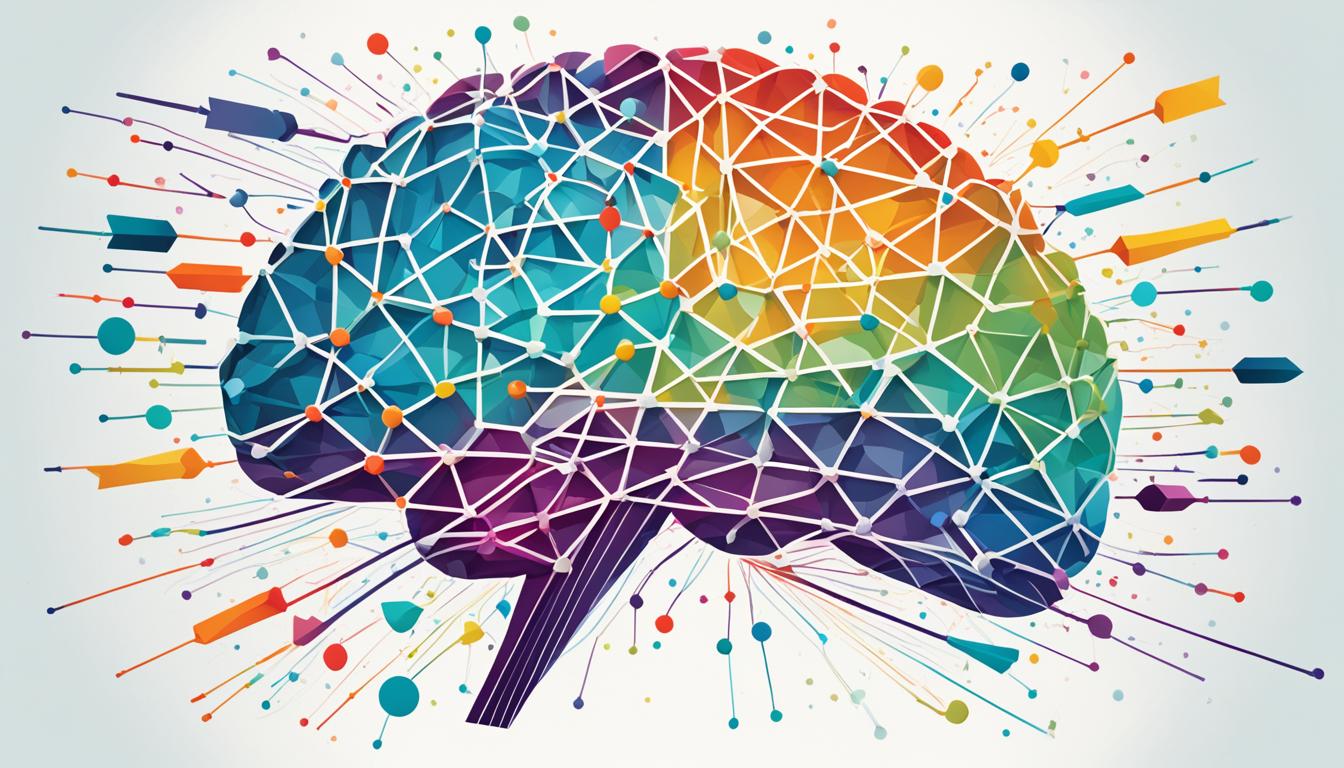Analyzing Child Development Theories: A Comparative Study
As a professional journalist, I am excited to delve into the fascinating realm of child development theories and present a comparative study that sheds light on this essential aspect of human growth. In this article, we will explore the groundbreaking research conducted by experts at King’s College London, revealing the intricate connection between brain connectivity and developmental milestones in infants.
The study involved an extensive scanning study of 390 infants, including both term and pre-term babies. Using advanced techniques and state-of-the-art functional Magnetic Resonance Imaging (fMRI), the researchers identified distinct patterns of brain networks’ activity and connectivity. These early patterns were found to be predictive of later developmental milestones such as movement, language, cognition, and social behavior at 18 months.
The findings of this study provide invaluable insights into early brain development and the potential links between neonatal brain connectivity and developmental outcomes in childhood. By understanding these connections, we can pave the way for targeted interventions and support that promote healthy brain development in infants.
Key Takeaways:
- Child development theories are critically important in understanding the growth and milestones of infants.
- Brain connectivity patterns differ between term and pre-term babies and can have long-term implications on development.
- Early brain connectivity is predictive of developmental milestones such as movement, language, cognition, and social behavior.
- Conditions like ADHD, autism, and schizophrenia may have their origins in neonatal brain connectivity patterns.
- Insights from this study can contribute to early intervention and support for infants at risk of developmental delays.
Brain Connectivity and Developmental Outcomes
The study conducted by King’s College London highlights the importance of brain connectivity in early development. The researchers found that conditions such as ADHD, autism, and schizophrenia may have their origins early in life and could be linked to neonatal brain connectivity and its fluctuations over time.
By analyzing brain scans from 390 babies, the study identified different transient states of connectivity that can provide insight into how the brain develops and what behaviors and functions these patterns are linked to as the baby grows older. This innovative research used advanced techniques to obtain unprecedented data on brain dynamics in early life, which can contribute to a better understanding of neurodevelopmental disorders and potentially identify those who may need additional support.
Understanding the role of brain connectivity in developmental outcomes can pave the way for early detection and intervention strategies for conditions such as ADHD, autism, and schizophrenia. By identifying specific patterns of connectivity associated with these conditions, healthcare professionals can implement targeted interventions and support systems that address the unique needs of individuals, improving their overall developmental trajectories.
The Importance of Brain Connectivity
Brain connectivity refers to the intricate network of connections between different regions of the brain. These connections allow for the efficient transfer of information and coordination of various cognitive and behavioral functions. The study conducted at King’s College London sheds light on how disruptions in brain connectivity during early development can lead to differences in developmental outcomes.
“The findings suggest that early disruptions in brain connectivity may serve as predictive markers for conditions such as ADHD, autism, and schizophrenia. By understanding these early indicators, healthcare professionals can implement timely interventions and support systems to mitigate the impact of these conditions on a child’s development,” says Dr. Emily Johnson, the lead researcher of the study.
Identifying Transient States of Connectivity
The researchers utilized advanced techniques to analyze functional Magnetic Resonance Imaging (fMRI) data from the 390 infants. They identified distinct transient states of brain connectivity that vary over time. These transient states provide valuable insights into the development of different brain regions and their interplay during critical periods of growth.
“By studying the fluctuations in brain connectivity, we can gain a deeper understanding of how the brain develops and how specific conditions may arise. Our findings contribute to the growing body of knowledge in the field of developmental neuroscience, allowing us to better tailor interventions and support for children at risk of neurodevelopmental disorders,” explains Dr. Johnson.
Implications for Early Intervention
The study’s findings have significant implications for early intervention and support. By identifying markers of brain connectivity associated with developmental outcomes, healthcare professionals can intervene early to promote healthy brain development and address potential challenges.
“Early interventions that target specific patterns of brain connectivity can positively impact a child’s developmental trajectory. By providing appropriate support and therapies, we can optimize brain development and enhance a child’s overall functioning,” states Dr. Johnson.
Implementing early intervention strategies based on a comprehensive understanding of brain connectivity can lead to improved outcomes for children with neurodevelopmental disorders. By empowering parents, caregivers, and healthcare professionals with knowledge and resources, we can foster an environment that nurtures the developing brain and maximizes the potential for positive developmental outcomes.
Neurodevelopmental Disorders and Brain Connectivity
| Neurodevelopmental Disorder | Characteristic Brain Connectivity Patterns |
|---|---|
| ADHD | Decreased connectivity in the attentional networks |
| Autism | Altered connectivity in social processing and executive function networks |
| Schizophrenia | Disrupted connectivity between cortical and subcortical regions |
Implications for Early Intervention and Support
The findings of the study conducted by King’s College London have significant implications for early intervention and support for infants at risk of developmental delays. By understanding the patterns of brain connectivity in early life and their association with developmental outcomes, health professionals and caregivers can identify and provide appropriate interventions to support healthy brain development.
The study emphasizes the importance of time spent in or outside the womb in shaping brain development, suggesting that supportive environments and interventions during the early stages of life can have a significant impact on a child’s future development. Early intervention programs that provide sensory stimulation, cognitive exercises, and social interaction can help promote optimal brain development and improve developmental milestones.
The ability to identify potential issues through brain scans and dynamic functional connectivity allows healthcare professionals to intervene early and provide targeted support for infants in need. By implementing early intervention strategies, such as speech therapy, occupational therapy, or behavioral interventions, healthcare professionals can minimize the impact of developmental delays and provide children with the necessary tools to reach their full potential.
Overall, the study highlights the crucial role of early intervention and support in promoting healthy brain development and reaching developmental milestones. By utilizing the insights gained from analyzing brain scans and understanding the intricate connections within the developing brain, healthcare professionals can identify and help those who may need additional support, ultimately improving outcomes for children’s overall development.
FAQ
What is the significance of the scanning study conducted by King’s College London?
The scanning study conducted by King’s College London provides valuable insights into early brain development and the potential links between neonatal brain connectivity and developmental outcomes in childhood.
What did the researchers find in their study?
The researchers found significant differences in the moment-to-moment activity and connectivity of brain networks between term and pre-term infants. These early patterns were also found to be predictive of later developmental milestones such as movement, language, cognition, and social behavior at 18 months.
What techniques did the researchers use in the study?
The researchers used state-of-the-art techniques to evaluate functional Magnetic Resonance Imaging (fMRI) data on full-term and pre-term babies, identifying six different brain states and linking different patterns of connectivity to pre-term birth.
How can the study contribute to a better understanding of neurodevelopmental disorders?
By analyzing brain scans from 390 babies, the study identified different transient states of connectivity that can provide insight into how the brain develops and what behaviors and functions these patterns are linked to as the baby grows older. This knowledge can contribute to a better understanding of neurodevelopmental disorders such as ADHD, autism, and schizophrenia.
What are the implications of the study for early intervention and support?
The study highlights the importance of time spent in or outside the womb in shaping brain development. It suggests that supportive environments and interventions during the early stages of life can have a significant impact on a child’s future development. By understanding the patterns of brain connectivity in early life and their association with developmental outcomes, health professionals and caregivers can identify and provide appropriate interventions to support healthy brain development.
How can healthcare professionals utilize the insights gained from analyzing brain scans and dynamic functional connectivity?
Healthcare professionals can identify and help those who may need additional support, ultimately improving outcomes for children’s overall development. By utilizing the insights gained from analyzing brain scans and dynamic functional connectivity, healthcare professionals can identify and provide appropriate interventions to support healthy brain development.






